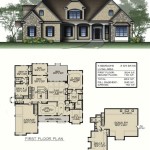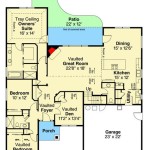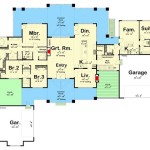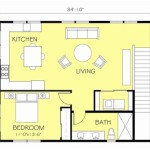Do-It-Yourself Floor Plans
Designing your own floor plan can be a daunting task, but it's also an incredibly rewarding one. With the right tools and a little know-how, you can create a space that's both functional and beautiful, all without the expense of an architect. Here are a few tips to get you started:
Measure Twice, Cut Once
The first step to designing your floor plan is to accurately measure your space. This includes taking measurements of the walls, windows, doors, and any other permanent fixtures. It's important to be precise with your measurements, as even a small error can throw off your entire design.
Start with a Sketch
Once you have your measurements, you can start to sketch out your floor plan. Begin by drawing the outline of your space, then add in the walls, windows, and doors. You don't need to be an artist to create a sketch; just focus on getting the general layout down.
Use Design Software
There are a number of free and paid design software programs available that can help you create your floor plan. These programs allow you to easily draw walls, add windows and doors, and even add furniture and other objects. Using design software can make the process of creating your floor plan much easier and more efficient.
Consider Scale
When you're creating your floor plan, it's important to consider the scale of your space. Make sure that the furniture and other objects you're adding to your plan are in proportion to the size of the room. A good way to do this is to use a scale ruler or to draw your plan to scale on graph paper.
Get Feedback
Once you have a draft of your floor plan, it's a good idea to get feedback from others. This could include family members, friends, or even a professional designer. Getting feedback can help you identify any potential problems with your design and make sure that it's functional and efficient.
Make Revisions
Once you've received feedback, you can start to make revisions to your floor plan. This may involve changing the layout of the rooms, adding or removing walls, or adjusting the size of the furniture. It's important to be flexible with your design and to make changes as needed.
Finalize Your Plan
Once you're satisfied with your floor plan, it's time to finalize it. This involves adding the finishing touches, such as furniture, fixtures, and appliances. You can also add notes to your plan, such as the dimensions of the rooms or the materials you plan to use.
Creating your own floor plan can be a challenging but rewarding experience. By following these tips, you can create a space that's both functional and beautiful, all without the expense of an architect.

Design Your Own House Floor Plans Roomsketcher

Design Your Own House Floor Plans Roomsketcher

Design Your Own House Floor Plans Roomsketcher

Floor Plan Creator And Designer Free Easy App

Design Your Own House Floor Plans Roomsketcher

Floor Plan Creator Planner 5d

Design Your Own House Floor Plans Roomsketcher

Floor Plan Creator Planner 5d

Design Your Own House Floor Plans Roomsketcher

Design Your Own House Floor Plans Roomsketcher








